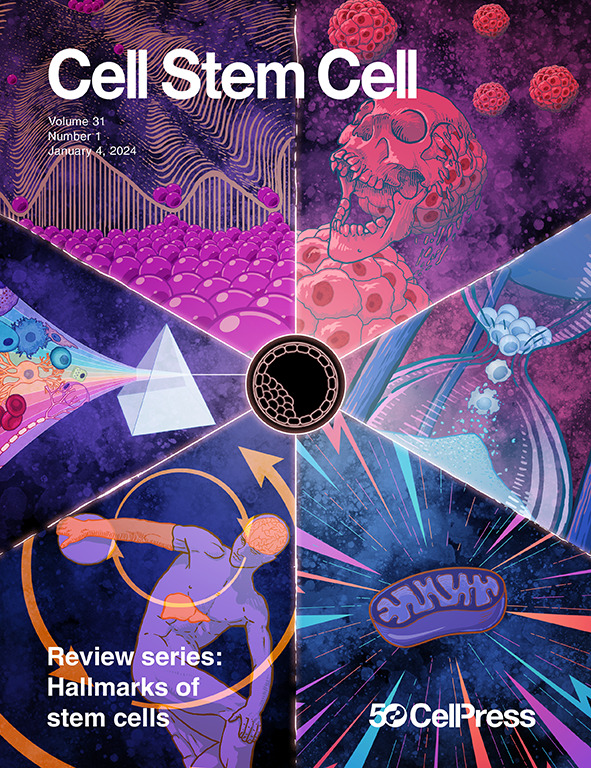Harnessing human iPSC-microglia for CNS-wide delivery of disease-modifying proteins
IF 20.4
1区 医学
Q1 CELL & TISSUE ENGINEERING
引用次数: 0
Abstract
Widespread delivery of therapeutic proteins to the brain remains challenging. To determine whether human induced pluripotent stem cell (iPSC)-microglia (iMG) could enable brain-wide and pathology-responsive delivery of therapeutic cargo, we utilized CRISPR gene editing to engineer iMG to express the Aβ-degrading enzyme neprilysin under control of the plaque-responsive promoter, CD9. To further determine whether increased engraftment enhances efficacy, we utilized a CSF1R-inhibitor resistance approach. Interestingly, both localized and brain-wide engraftment in Alzheimer’s disease (AD) mice reduced multiple biochemical measures of pathology. However, within the plaque-dense subiculum, reductions in plaque load, dystrophic neurites, and astrogliosis and preservation of neuronal density were only achieved following widespread microglial engraftment. Lastly, we examined chimeric models of breast cancer brain metastases and demyelination, demonstrating that iMG adopt diverse transcriptional responses to differing neuropathologies, which could be harnessed to enable widespread and pathology-responsive delivery of therapeutics to the CNS.

利用人类ipsc -小胶质细胞在全中枢神经系统范围内传递疾病修饰蛋白
将治疗性蛋白质广泛输送到大脑仍然具有挑战性。为了确定人类诱导多能干细胞(iPSC)-小胶质细胞(iMG)是否能够实现全脑和病理反应性的治疗药物递送,我们利用CRISPR基因编辑技术对iMG进行改造,使其在斑块反应启动子CD9的控制下表达a β-降解酶neprilysin。为了进一步确定植入增加是否能提高疗效,我们采用了csf1r抑制剂耐药性方法。有趣的是,阿尔茨海默病(AD)小鼠的局部和全脑植入都降低了多种病理生化指标。然而,在斑块密集的骨下,斑块负荷的减少、神经突的营养不良、星形胶质增生和神经元密度的保持只有在广泛的小胶质细胞植入后才能实现。最后,我们研究了乳腺癌脑转移和脱髓鞘的嵌合模型,证明iMG对不同的神经病变有不同的转录反应,这可以用于广泛和病理反应性地向中枢神经系统输送治疗药物。
本文章由计算机程序翻译,如有差异,请以英文原文为准。
求助全文
约1分钟内获得全文
求助全文
来源期刊

Cell stem cell
生物-细胞生物学
CiteScore
37.10
自引率
2.50%
发文量
151
审稿时长
42 days
期刊介绍:
Cell Stem Cell is a comprehensive journal covering the entire spectrum of stem cell biology. It encompasses various topics, including embryonic stem cells, pluripotency, germline stem cells, tissue-specific stem cells, differentiation, epigenetics, genomics, cancer stem cells, stem cell niches, disease models, nuclear transfer technology, bioengineering, drug discovery, in vivo imaging, therapeutic applications, regenerative medicine, clinical insights, research policies, ethical considerations, and technical innovations. The journal welcomes studies from any model system providing insights into stem cell biology, with a focus on human stem cells. It publishes research reports of significant importance, along with review and analysis articles covering diverse aspects of stem cell research.
 求助内容:
求助内容: 应助结果提醒方式:
应助结果提醒方式:


